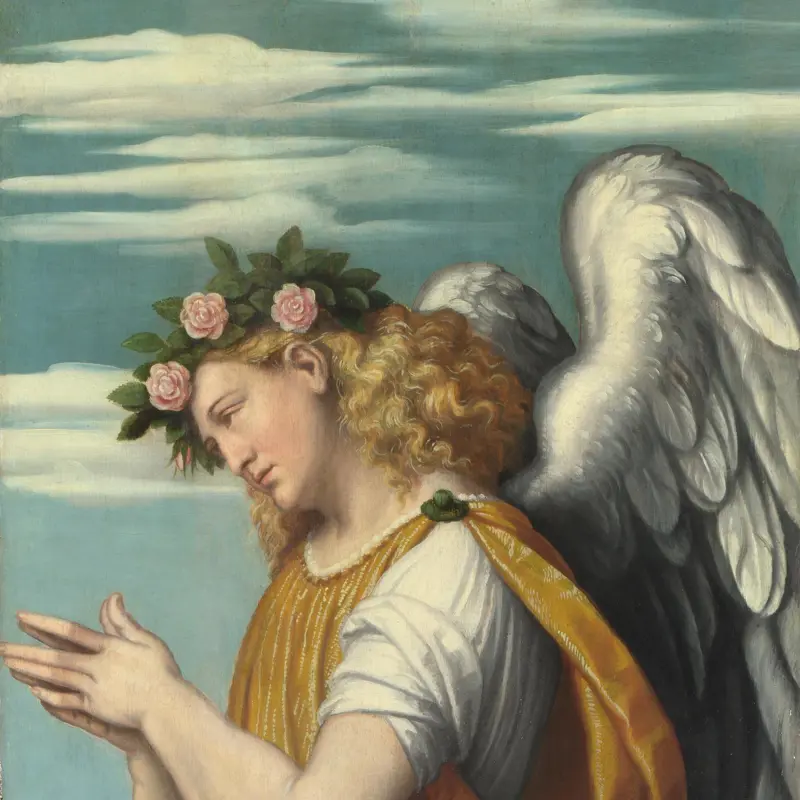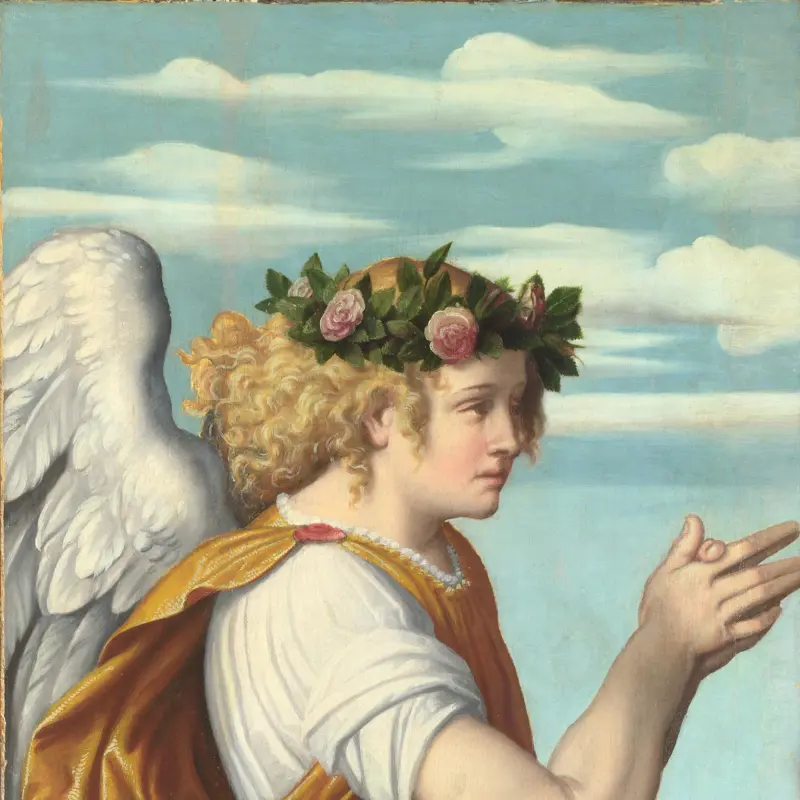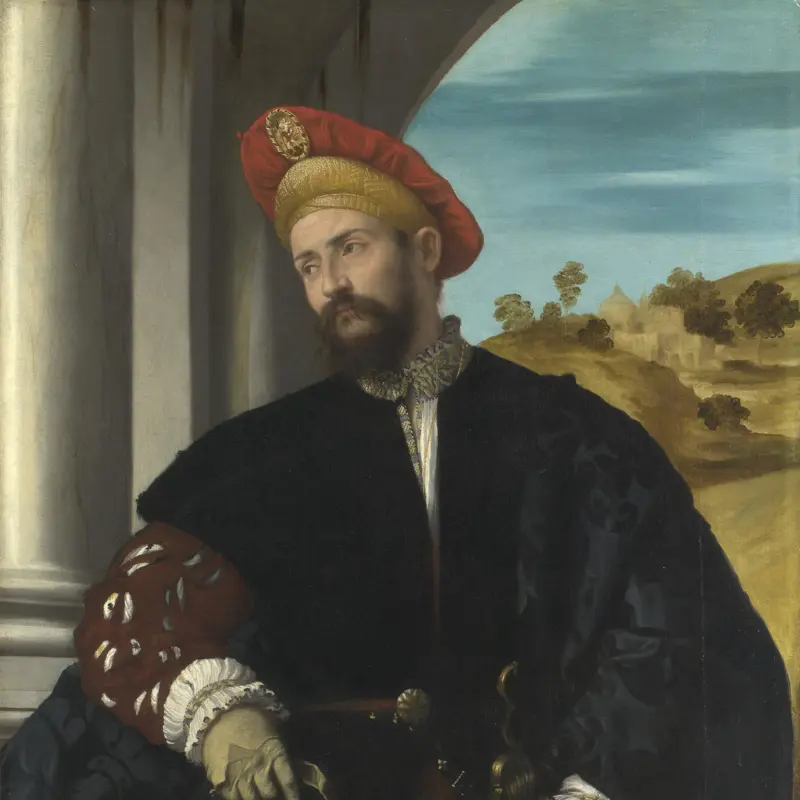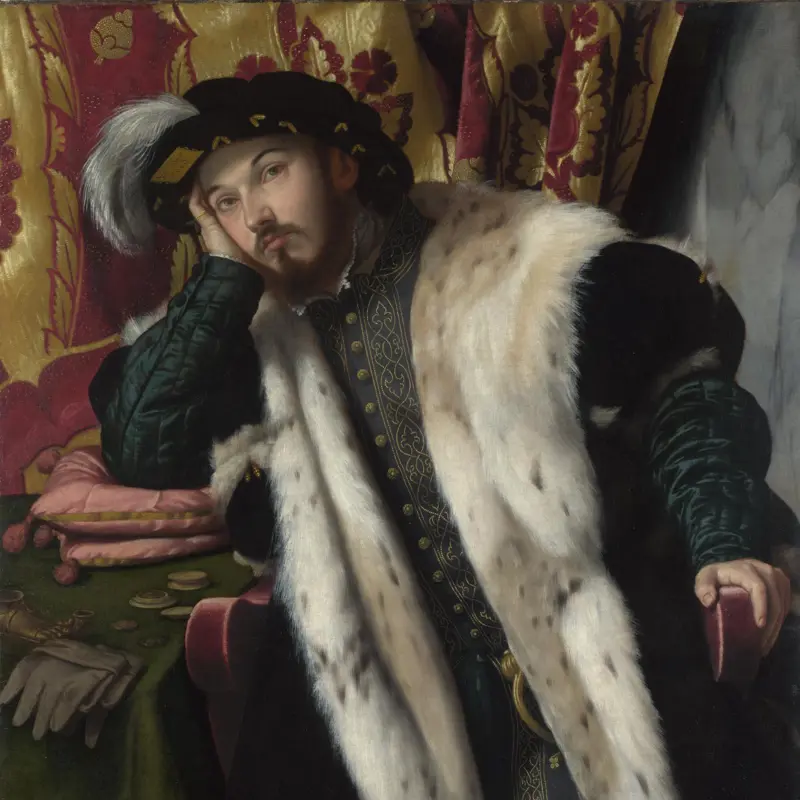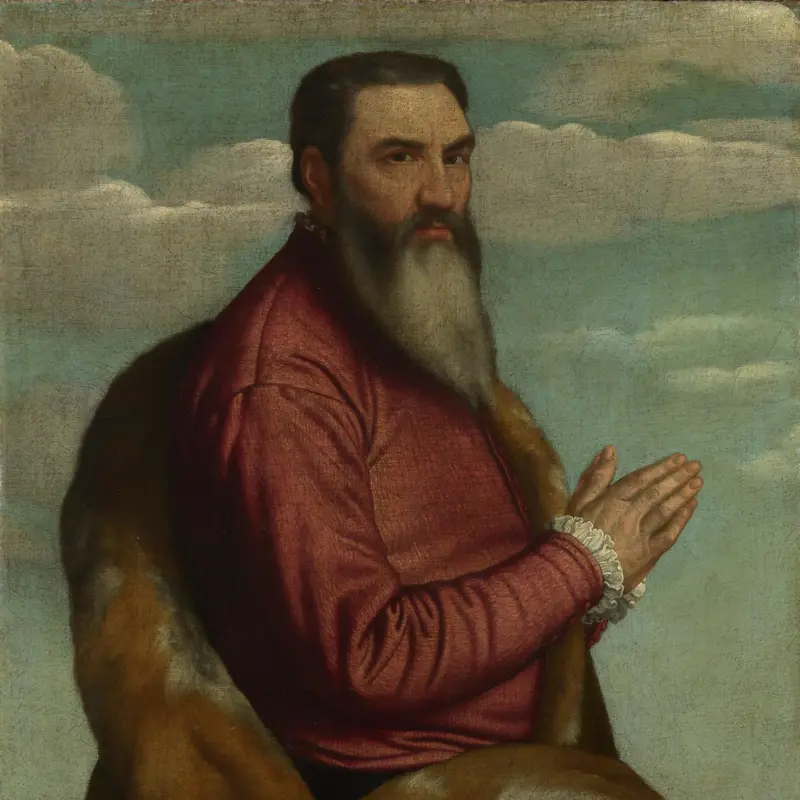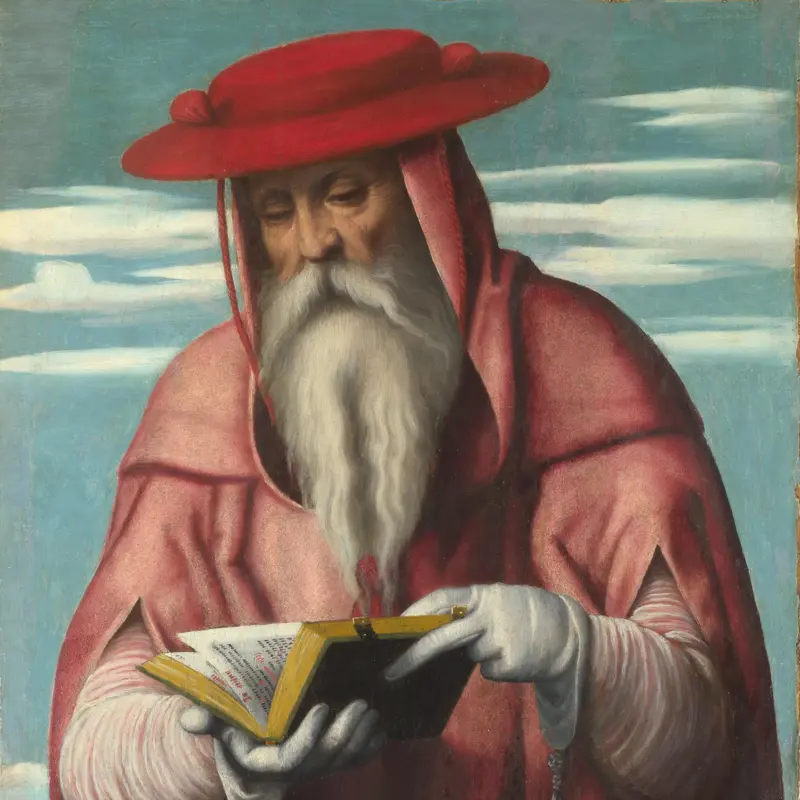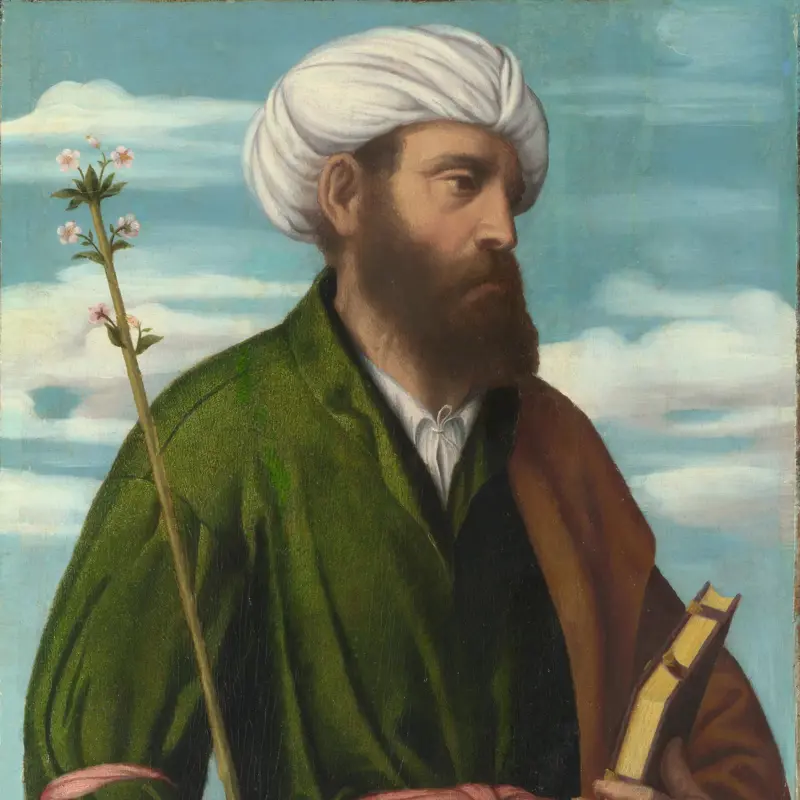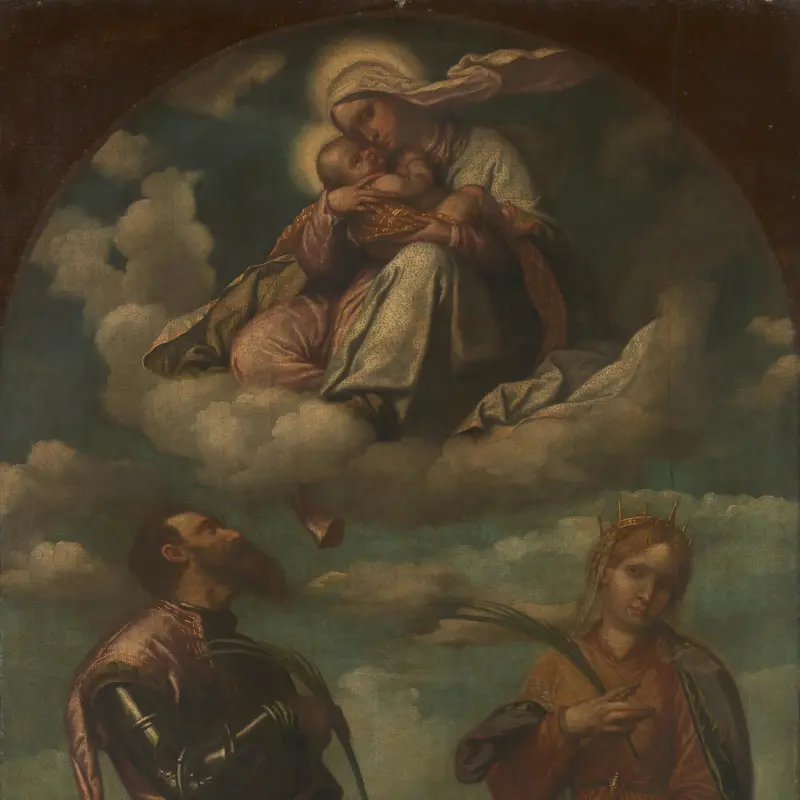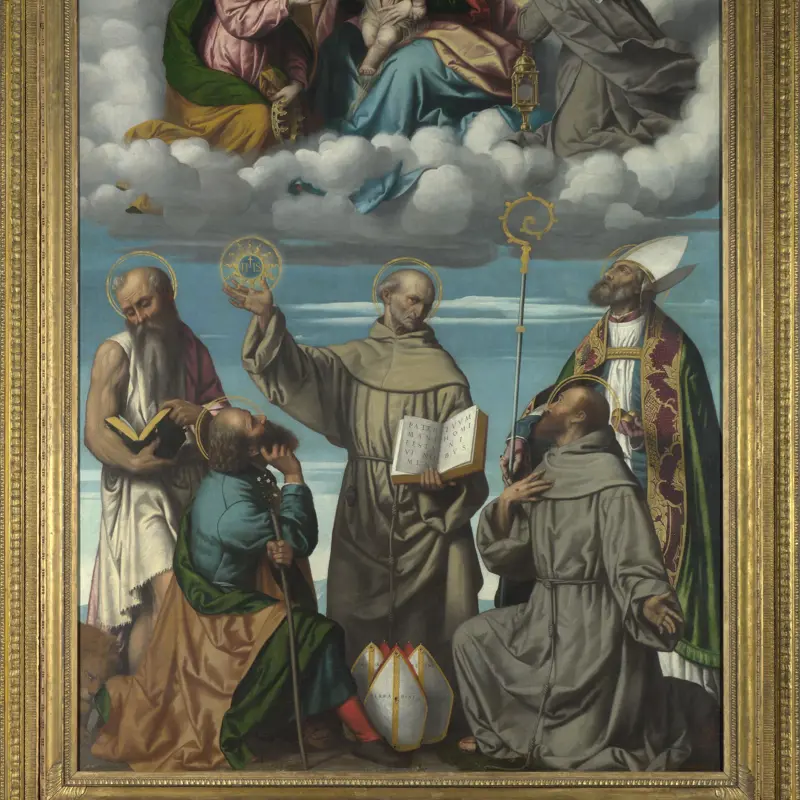Moretto da Brescia, 'Christ blessing Saint John the Baptist', about 1520-3
About the work
Overview
In this painting from early in Moretto’s career, Christ blesses his cousin Saint John the Baptist, who kneels beside a river, wearing a tunic of camel skin. This episode is not mentioned in the Gospels and is not otherwise known in art. It may be that Christ has just been baptised by the saint in the River Jordan and is now about to go into the wilderness (Mark 1: 9–12).
This scene was presumably once part of a larger painting, which may have featured a half-length or bust-length portrait on the right. It has been suggested that this scene and Moretto’s small canvas of Christ in the Wilderness (Metropolitan Museum of Art, New York), which is also a fragment, were once part of the same composition. However, the size of the figures is different, so the original character of this painting remains a mystery.
Key facts
Details
- Full title
- Christ blessing Saint John the Baptist
- Artist
- Moretto da Brescia
- Artist dates
- About 1498 - 1554
- Date made
- About 1520-3
- Medium and support
- Oil on canvas
- Dimensions
- 66.9 × 94.7 cm
- Acquisition credit
- Layard Bequest, 1916
- Inventory number
- NG3096
- Location
- Not on display
- Collection
- Main Collection
- Previous owners
Provenance
Additional information
Text extracted from the ‘Provenance’ section of the catalogue entry in Nicholas Penny, ‘National Gallery Catalogues: The Sixteenth Century Italian Paintings’, vol. 1, ‘Paintings from Bergamo, Brescia and Cremona’, London 2004; for further information, see the full catalogue entry.
Bibliography
-
1962Gould, Cecil, National Gallery Catalogues: The Sixteenth Century Italian Schools (excluding the Venetian), London 1962
-
1987Gould, Cecil, National Gallery Catalogues: The Sixteenth Century Italian Schools, London 1987
-
2001
C. Baker and T. Henry, The National Gallery: Complete Illustrated Catalogue, London 2001
-
2004
Penny, Nicholas, National Gallery Catalogues: The Sixteenth Century Italian Paintings, 1, Paintings from Bergamo, Brescia and Cremona, London 2004
About this record
If you know more about this work or have spotted an error, please contact us. Please note that exhibition histories are listed from 2009 onwards. Bibliographies may not be complete; more comprehensive information is available in the National Gallery Library.

